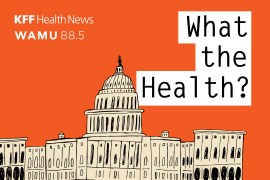Planned Parenthood’s political and advocacy organizations will use a more than $40 million war chest to blitz GOP officeholders and candidates in an effort to flip the House and maintain Democratic control of the Senate and presidency.
The plan is to focus on the records of Republicans who have repeatedly voted against access to abortion, contraceptives, in vitro fertilization or gender-affirming care for trans people.
On Tuesday, the organization’s lobbying arm, Planned Parenthood Action Fund, announced its endorsement of Kamala Harris for president.
Since Roe v. Wade was overturned in 2022, the right to abortion has proved to be an issue that motivates voters, and Planned Parenthood is betting that will again be true at the ballot box this fall. News that Harris is now the leading Democratic presidential candidate, with President Biden stepping back, is also energizing advocates.
Alexis McGill Johnson, Planned Parenthood Action Fund president and CEO, called Harris “one of the fiercest voices we have on sexual and reproductive rights.”
“Having spent meaningful time and energy with abortion providers, patients, organizers and advocates, the Vice President’s presence takes the conversation around abortion rights to heights we’ve never seen before in a presidential campaign,” she said. “There’s no doubt that she will generate new energy for the future of the fight ahead.”
Twenty-five states ban abortion in almost all circumstances or limit access to it beginning early in pregnancy. Other states are considering similar restrictions. And support for a national abortion ban may pick up currency if Republicans gain control of Congress and the White House.
Shwetika Baijal, who runs political initiatives for Planned Parenthood, said recent elections have shown that abortion drives voter turnout, especially among young people and people of color. An example of this is the 2022 Kansas primary election, in which voters from a red state turned out in record numbers shortly after the Dobbs decision to resoundingly protect abortion rights.
“I think you find that when you take someone’s rights away, it makes them really angry,” Baijal said.
The national Planned Parenthood campaign is hoping to leverage this anger starting with races in several battleground states, including Arizona, Michigan and Nevada. The aggressive ad campaign has already hit multiple platforms, including podcasts like Call Her Daddy, a sex and relationship show, which has received an average of 5 million listeners a week.
On top of that, Planned Parenthood’s California affiliates will spend a seven-figure amount to target eight congressional districts, most of which typically vote Republican but in which voters supported a 2022 ballot measure to enshrine abortion rights in the state constitution.
Republicans dismiss the Planned Parenthood efforts, noting that even districts that backed the 2022 measure also voted to keep their Republican leaders in charge. California Assembly Republican leader James Gallagher, who is on the state Republican Party board, said he doesn’t see a reason the 2024 elections will play out differently.
“People can be supportive of abortion rights and still vote for the Republicans because they feel the Republican is better at addressing the everyday issues,” Gallagher said.
Baijal said calling attention to Republicans’ voting records is crucial now that many are backing away from long-held, hard-line antiabortion positions that are proving unpopular. Some candidates, like Republican Senate nominee Sam Brown of Nevada, have pledged to protect abortion rights, even if their past statements suggest otherwise.
“We have to talk about what these people are trying to do, not what they’re saying,” Baijal says.
This article is not available for syndication due to republishing restrictions. If you have questions about the availability of this or other content for republication, please contact NewsWeb@kff.org.
This article was produced by KFF Health News, which publishes California Healthline, an editorially independent service of the California Health Care Foundation.






